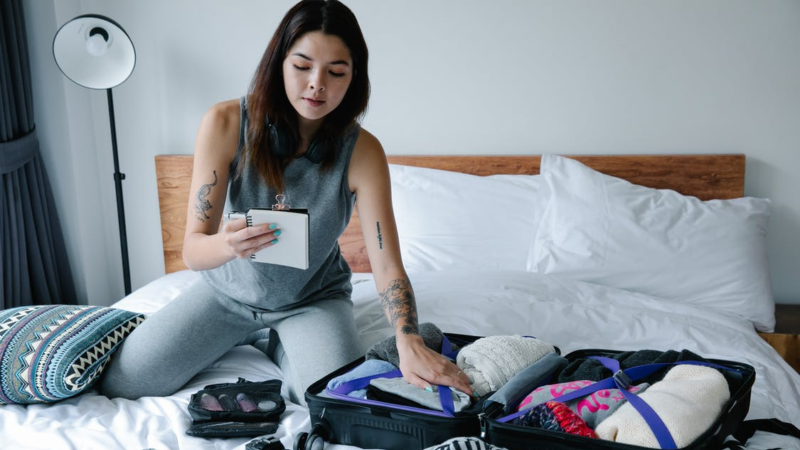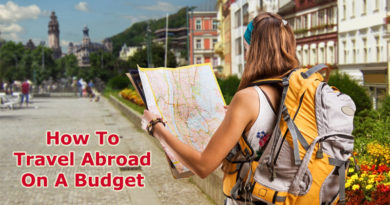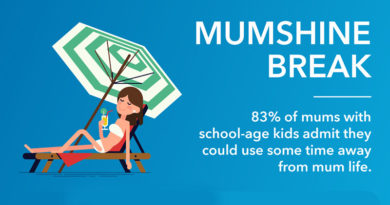Female Solo Travelers: Checklist and Safety Advice
Traveling is an exciting way to adventure and explore. A lot of people take trips with other people, but a new trend is solo traveling. Solo traveling is for anyone who wants a unique and personalized experience, but it’s rapidly gaining popularity with women.

For some, solo travel may seem lonely or potentially unsafe. The truth of the matter is, however, solo travel offers a number of great benefits that you just don’t get traveling in larger groups.
Even with the benefits, there are elements of safety and preparation that every woman should take before embarking on a solo trip.
Everything from packing, to safety and awareness, even preparing a list of roadside assistance companies, traveling solo takes a bit more planning. The work and preparation don’t take away from the experience, though. It makes the trip safer and so much more enjoyable.
Benefits of Solo Travels
Solo travels are a big shift from the more traditional travel experience. Change isn’t necessarily a bad thing, though. In fact, the shift to solo traveling brings with it some great benefits and personal experiences.
Self-awareness and Well-being
Perhaps the biggest benefit for women who travel solo is the increase in self-awareness and well-being. Exploring and adventuring on your own gives you the chance to learn more about yourself. You can expand your horizons and learn more about yourself, which is something many chase every day.
Solo travels also increase your well-being, which is very important as the world transitions out of the COVID-19 pandemic. Studies have shown that taking time to be alone and experience new things helps to improve your mental health. Planning and moving about the world alone, for a time, increases endorphins which, in turn, decreases stress and depression.
Cost Effective
Traveling alone is also incredibly cost effective. Everything is cheaper when you only need to purchase one item. This means you have even more control over the budget and how it’s spent.
Everything from food to accommodations is easier to find and lighter on the budget. You might be able to invest in an experience or aspect of the adventure that might have been out of your budget with multiple people.
Empowering
Traveling by yourself is also an incredibly empowering experience. When you are on your own, all decisions have to be made by you and, when necessary, you are your only advocate.
This may sound a little overwhelming, and at times it can be, but with proper planning, these decisions only add to the experience and leave you with a sense of pride and independence.
Some women move from a short stay in a new place to working from home and traveling constantly. Solo travels are a great way to invest in yourself and see what the world has to offer.
Improved Communication and Connection Skills
Solo travels also help improve your ability to connect with others. When you are alone, you have more opportunities to meet new friends — locals or tourists. Without the built-in interaction with travel mates or family members, you will look for interaction with others and expand your circle.
This newly found connection also leads to improved communication and language skills. When traveling to a place with a different language, you’ll be given the opportunity to communicate in the native language with native speakers.
Solo Travelers Checklist
Planning to travel by yourself is a little different than planning a group trip. Of course, the basics are similar — pick a destination, find places to stay, pack, and go — but when traveling alone everything has to be done with a little more intentionality.
#1 – Intentional Destination
One of the reasons to travel alone is to connect with yourself and the area and culture around you. This should drive your choice of destination. Think of your motivation and inspiration for this solo trip and find a place that connects to that intention.
Taking the time to find the right place for your trip will only enhance your experience, so slow down and get the destination right.
#2 – Solid Plans for First Night
The first night is the most important. It’s not necessarily about fun and experiencing the area, but more about safety and the ability to relax.
When booking flights and accommodations, make sure you arrive no later than mid-afternoon. You’ll want time to safely find and arrive at your hotel or hostel. After a long day of travel, you’ll want a comfortable bed to lay your head and rest up for the first full day of your solo experience.
#3 – Pack Well But Light
After booking plane tickets and hotel reservations, the most important piece of solo travel is packing. Traveling alone means you’ll have to pay attention to the details of packing. Think of your trip from travel to weather and potential experiences. If you pack well, and lightly, you’ll be free to experience the beauty of the travel itself.
Keeping everything light will make it easier to move around and get involved in the area around you. You’ll be more mobile and less worried about forgetting or losing your belongings.
Packing lightly can be tricky, though. You’ll have to plan out wardrobe necessities and ensure you have light layers to cover all potential weather eventualities.
#4 – Stay Local Always
Once you’ve arrived, it’s time to get busy experiencing the area and culture around you. The best way to immerse yourself in your destination is to stay local as much as possible.
You can buy local foods, crafts, and goods. You can stay in locally owned and operated accommodations. Not only will you be supporting the local economy and people, but you’ll be able to better experience the culture.
Solo Travelers Safety Advice
Safety is one of the top priorities when it comes to women traveling alone. There are real dangers when going abroad alone, but there are ways to minimize those risks.
#1 – Share Your Itinerary
After you have a general itinerary, share that information with a trusted member of your circle. This ensures someone knows the general pattern of your movements and when to expect you back home.
You’ll also want to maintain some kind of consistent communication. Establish an expectation of when you will check in and how. This will ensure your contact knows you are well and physically safe.
#2 – Don’t Share Accommodations
While sharing is caring, it’s never a good idea to share your accommodation information with people you meet on the trip. Even if you feel safe with newly made friends, don’t share where you are staying. This helps ensure you are safe when at your most vulnerable.
#3 – Protect Documents and Money
Traveling anywhere requires identification of some kind and money. These pieces of information are important and should be protected at all times. There are dozens of document and money holders on the market that are easy to conceal some of your most essential travel elements.
#4 – Fake it Until You Make it
Tourists can be easy targets when they are easy to spot. Minimize looks of confusion and fear. These emotions make you more vulnerable.
The key is confidence. And if you don’t feel overly confident, fake it. Hold your head up high and walk tall. You’ll seem more confident, even when you don’t feel that way.
#5 – Trust Your Instincts
Traveling alone means you don’t have a backup. You are solely responsible for being aware of yourself, your surroundings, and your belongings. The best gift in these types of situations is your instinct.
Learn to trust your instincts while adventuring alone. If something doesn’t feel right, leave or change your plans. Even if it means traveling to a different city, make it happen.
Roadside Assistance and Insurance
Solo travels can take many different forms. One of the biggest questions when traveling alone is how you will move about the city and place you’re staying. Will you use public transportation of some kind, or will you need to have more freedom in how you move about?
If it’s the latter, then you’ll want to look into insurance coverage with roadside assistance. One of the worst situations you can find yourself in while traveling solo is car trouble in an unknown area with bad rural roads. Roadside assistance can be a lifesaver, and it’s often very affordable.
Look into adding roadside assistance to your current auto insurance policy before traveling around the U.S. on your own. It’s worth the extra cost to feel safe and secure even if your vehicle stops working as expected.
Solo traveling is an adventure. It requires planning and awareness, but that extra preparation shouldn’t stop you from jumping in with both feet.

Laura Gunn writes and researches for the auto insurance comparison site, 4AutoInsuranceQuote.com. She is an avid traveler and is passionate about women preparing themselves to experience the world.



